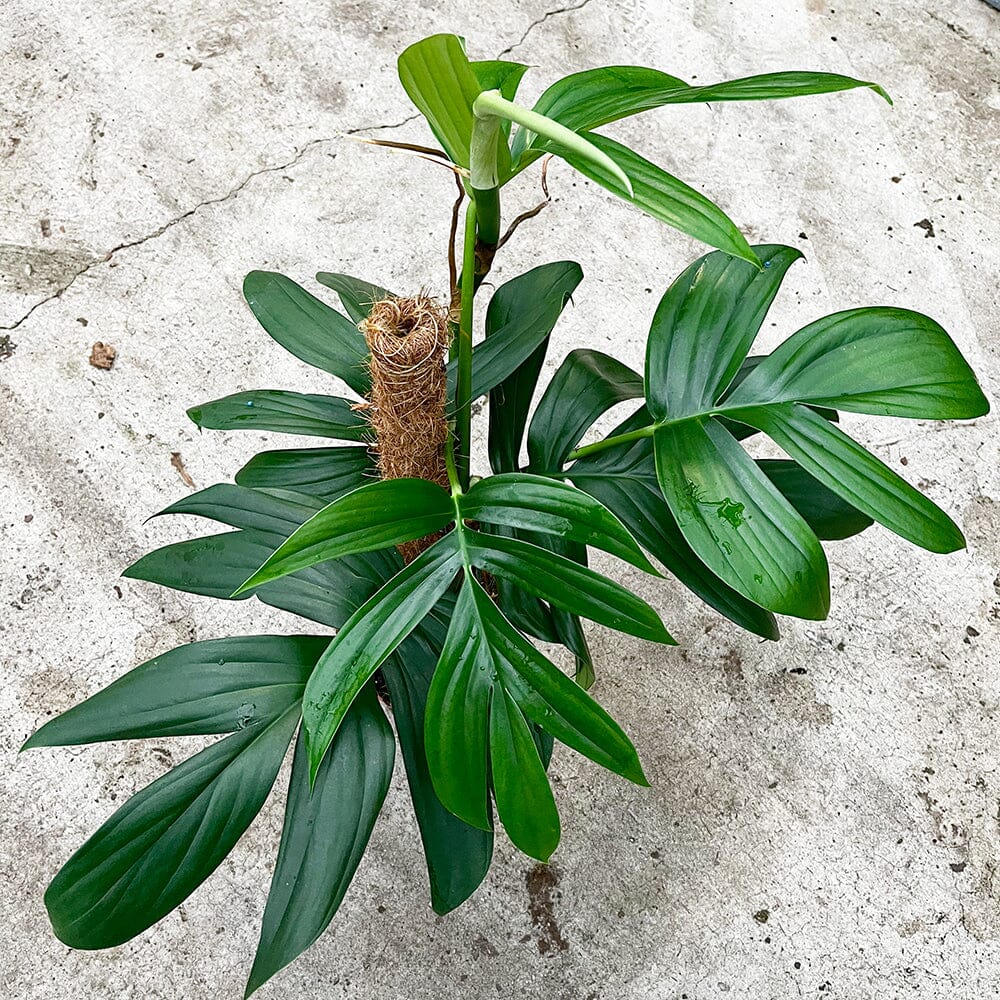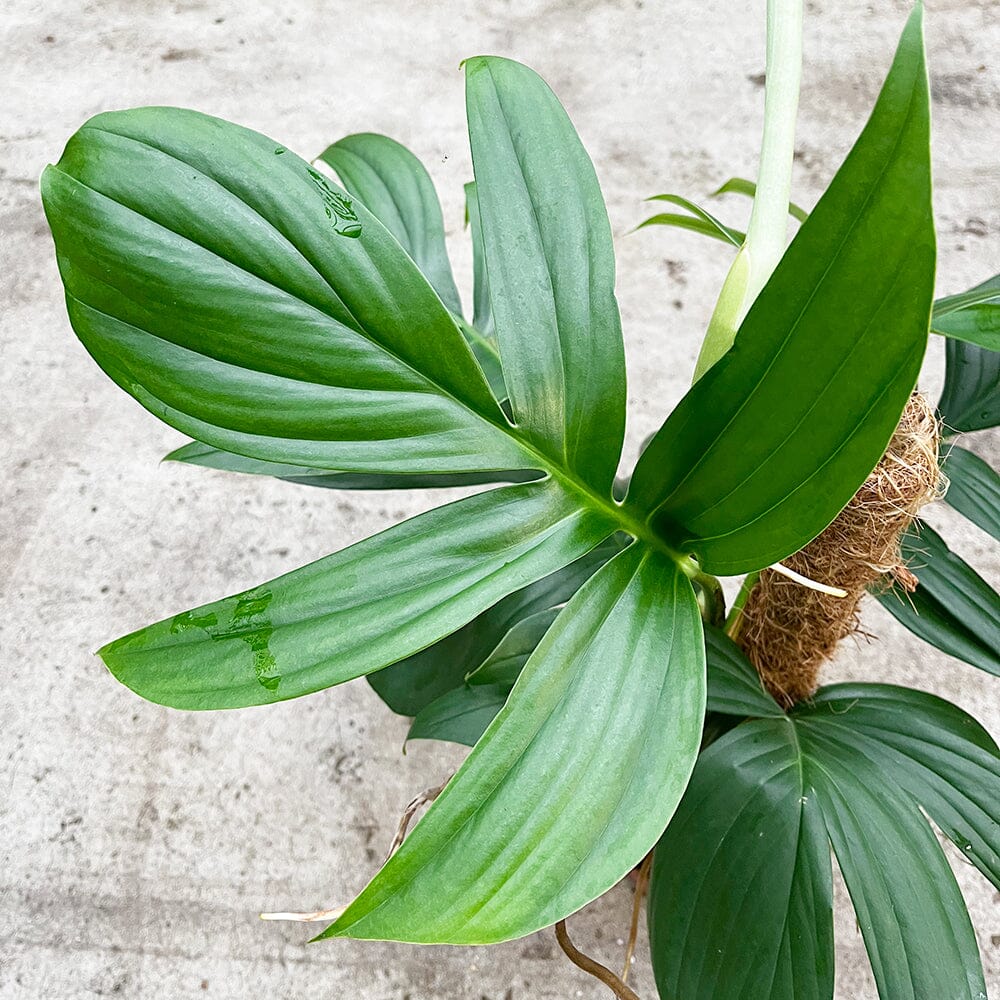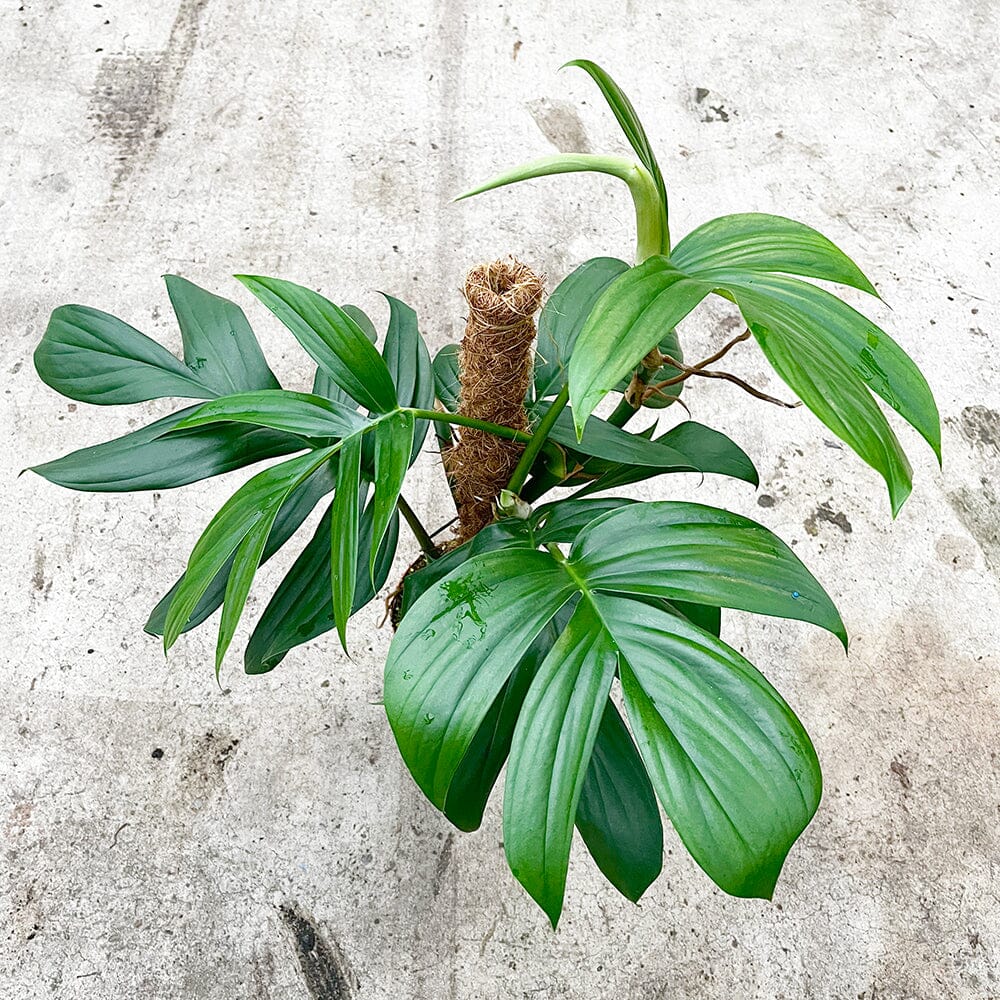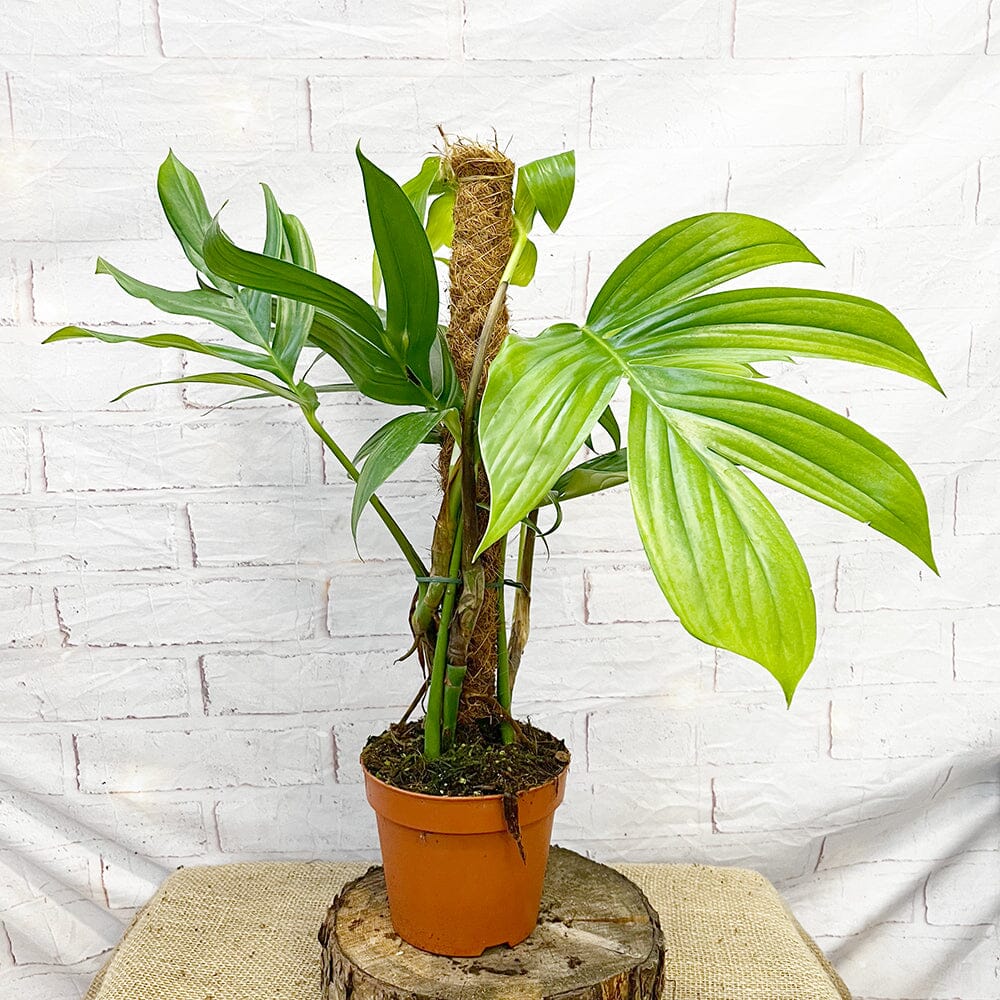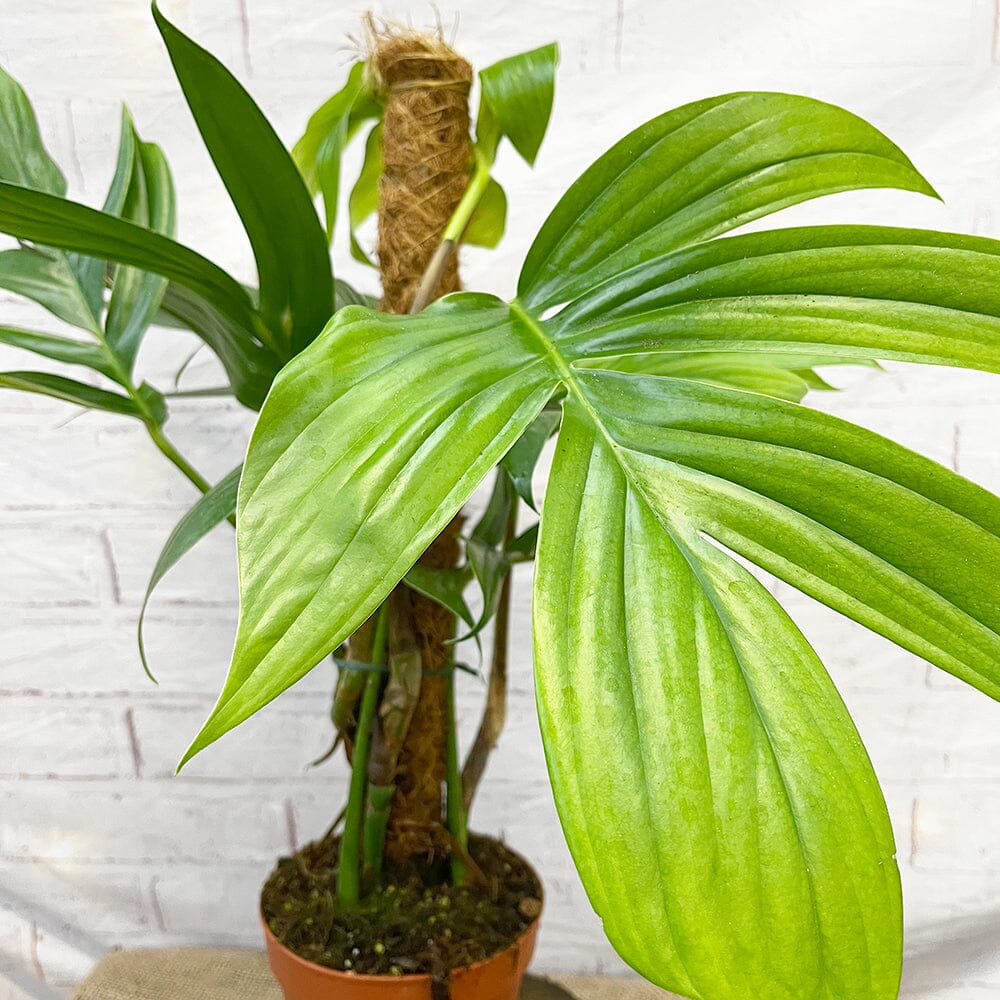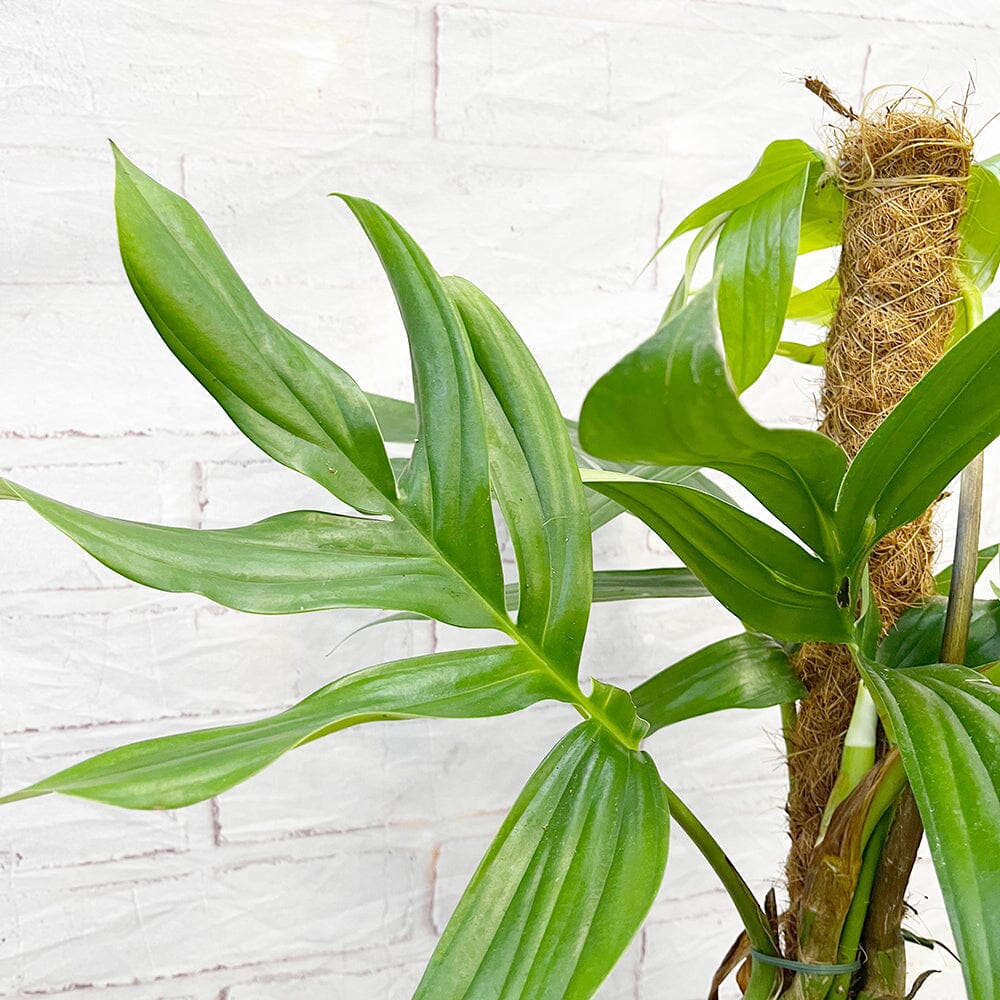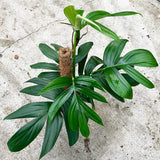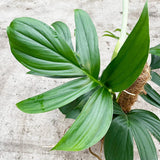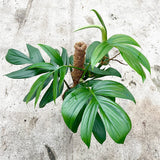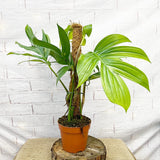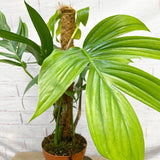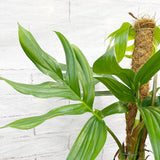-56%
55 - 65cm Epipremnum Dragon Tail on mosspole Pothos 17cm Pot House Plant
House Plant
£79.99
£34.99
Epipremnum pinnatum, commonly known as Dragon Tail Plant, is a popular houseplant valued for its attractive foliage and ease of care. Here's a detailed care guide for a mature Epipremnum Pinnatum:
Description
- Appearance: Mature plants boast fenestrated leaves, i.e., leaves with natural holes or splits. These leaves can be quite large, sometimes exceeding 30 cm in length. The plant's vines can grow quite long, making it an excellent choice for hanging baskets or as a climbing plant with the support of a moss pole or trellis.
- Growth Pattern: It's a fast-growing vine that thrives in indoor environments, often reaching several meters in length under optimal conditions.
Care Guide
-
Light Requirements:
- Prefers bright, indirect light. Too much direct sunlight can scorch the leaves, while too little light can cause the plant to become leggy.
- A position near an east or west-facing window is ideal.
-
Watering:
- Water when the top 2-3 inches of soil feel dry to the touch. Over-watering can lead to root rot, so it’s important to ensure good drainage.
- Reduce watering in the winter months when the plant's growth slows down.
-
Humidity and Temperature:
- Thrives in a humid environment. If your home is dry, consider using a humidifier or placing the plant in a naturally humid area like a bathroom.
- Prefers temperatures between 18°C and 25°C. Avoid placing it in draughty areas or near heat sources.
-
Soil and Fertilisation:
- Use a well-draining potting mix, ideally one that's rich in organic matter.
- Fertilise every 4-6 weeks during the growing season (spring and summer) with a balanced, water-soluble fertiliser. Reduce fertilising in autumn and winter.
-
Pruning and Repotting:
- Prune as needed to control growth or remove any yellow or damaged leaves.
- Repot every 2-3 years or when the plant becomes root-bound. Use a slightly larger pot each time to encourage growth.
-
Pest and Disease Management:
- Watch out for common pests like spider mites, mealybugs, and aphids. Treat infestations promptly with insecticidal soap or neem oil.
- Avoid over-watering to prevent fungal diseases.
-
Propagation:
- Easily propagated through stem cuttings. Place a cutting with at least one node in water or directly into soil to root.
Additional Tips
- Climbing Support: As it matures, consider providing a moss pole or trellis for support, encouraging the plant to develop larger, more mature foliage.
- Leaf Cleaning: Wipe the leaves occasionally to remove dust and support efficient photosynthesis.
Remember, each plant is unique, so observe your Epipremnum Pinnatum's responses to its environment and adjust care as needed. With proper care, this striking plant can be a long-lasting and rewarding addition to your indoor garden.
Our custom made boxes are perfect for transporting your new plants straight from our Yorkshire tropical nursery direct to your door. We use a next day DHL service as standard, allowing plants to be delivered as fast as possible.
Check out our YouTube video to see exactly how we pack for safe delivery.
Check out our YouTube video to see exactly how we pack for safe delivery.
- Plants are supplied in plastic nursery pots unless stated in the product title.
- Plants are not for consumption unless stated as edible.
- Plant heights can fluctuate +/- 10%.
- Our plants are kept at our tropical nursery in Yorkshire where we maintain an average temperature of 18c.








